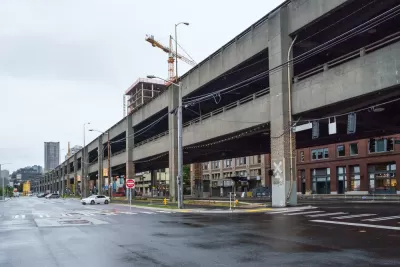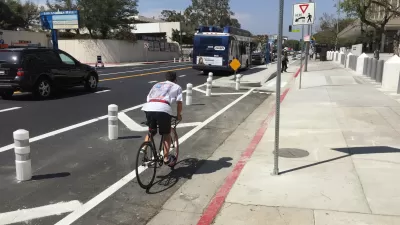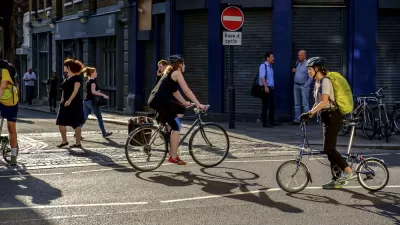Dubbed the "Seattle Squeeze," heavier traffic is expected in the new year as the Alaskan Way Viaduct closes and downtown construction projects continue. While the city prepares, activists want to use the opportunity to encourage other modes.

"On Jan. 11, 2019," Josh Cohen writes, "the Highway 99 Viaduct will close, three weeks before its replacement tunnel opens. With the Viaduct's more than 90,000 daily drivers spilling onto other streets and highways, January is sure to be a mess." On top of that, major construction projects will continue to impact traffic conditions until 2024, a period some are calling the "Seattle Squeeze."
During the Viaduct closure and beyond, the city is "desperate to get fewer people to drive solo." But as the city focuses most of its attention on mitigating the Squeeze's immediate effects, activists want to use the moment to change how Seattleites get around in a lasting way. They include Move All Seattle Sustainably (MASS), an advocacy group that has released a list of priorities for the city during the crunch.
Activists are focused on ways to improve bus service, build out bike lanes, and make it easier for commuters to walk to work. Making progress on those fronts, they argue, will make the city's long-term transportation goals more feasible as people contemplate getting out of their cars. Those goals include congestion pricing, "the centerpiece of [Mayor] Durkan's long term strategy." If implemented, Seattle would be the first U.S. city with such a policy.
FULL STORY: As Seattle’s traffic doom looms, some see a silver lining

Alabama: Trump Terminates Settlements for Black Communities Harmed By Raw Sewage
Trump deemed the landmark civil rights agreement “illegal DEI and environmental justice policy.”

Study: Maui’s Plan to Convert Vacation Rentals to Long-Term Housing Could Cause Nearly $1 Billion Economic Loss
The plan would reduce visitor accommodation by 25% resulting in 1,900 jobs lost.

Why Should We Subsidize Public Transportation?
Many public transit agencies face financial stress due to rising costs, declining fare revenue, and declining subsidies. Transit advocates must provide a strong business case for increasing public transit funding.

Wind Energy on the Rise Despite Federal Policy Reversal
The Trump administration is revoking federal support for renewable energy, but demand for new projects continues unabated.

Passengers Flock to Caltrain After Electrification
The new electric trains are running faster and more reliably, leading to strong ridership growth on the Bay Area rail system.

Texas Churches Rally Behind ‘Yes in God’s Back Yard’ Legislation
Religious leaders want the state to reduce zoning regulations to streamline leasing church-owned land to housing developers.
Urban Design for Planners 1: Software Tools
This six-course series explores essential urban design concepts using open source software and equips planners with the tools they need to participate fully in the urban design process.
Planning for Universal Design
Learn the tools for implementing Universal Design in planning regulations.
Caltrans
Smith Gee Studio
Institute for Housing and Urban Development Studies (IHS)
City of Grandview
Harvard GSD Executive Education
Toledo-Lucas County Plan Commissions
Salt Lake City
NYU Wagner Graduate School of Public Service





























